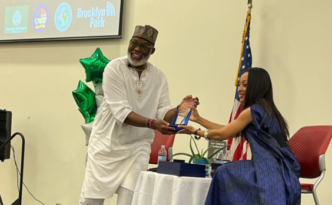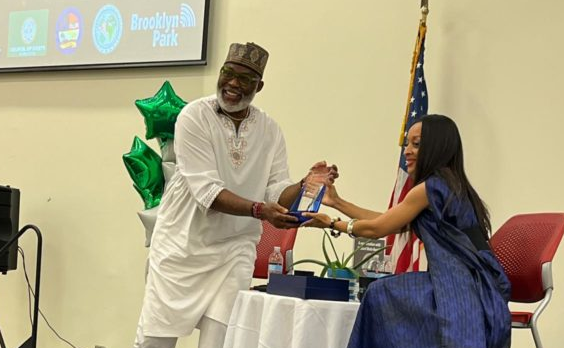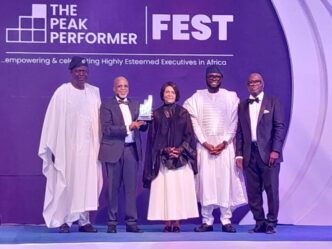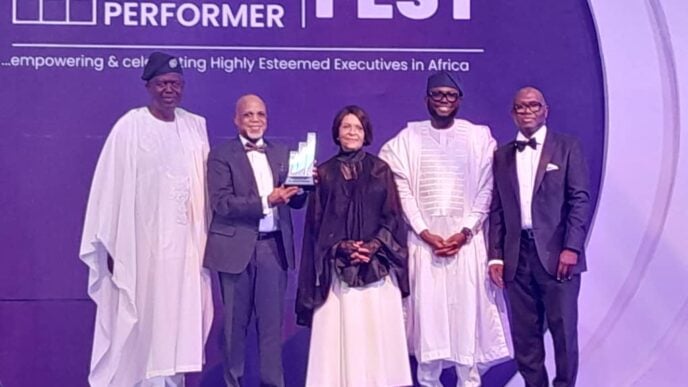The technology sector has since been male-dominated, but women are progressively making their mark, breaking barriers, and blazing the trail toward a more inclusive future. This article considers inspiring stories of women in tech, highlights initiatives promoting diversity, and discusses the impact of these changes on the industry. It is a relatively long read with examples to inspire women and leaders who inspire others.
1. Inspiring Stories of Trailblazing Women
A. Pioneers of the Past
I. Ada Lovelace (1815-1852) is celebrated as the world’s first computer programmer. Her collaboration with Charles Babbage on the Analytical Engine, an early mechanical general-purpose computer, was disruptive. Lovelace’s vision extended way beyond mere calculations; she saw the potential for computers to manipulate symbols and process information in ways that could improve various fields, from mathematics to art.
Advertisement
a. Contributions to Computing: Lovelace wrote sizable notes on the Analytical Engine, including an algorithm intended for it. This algorithm is now acknowledged as the first computer program, showing her deep understanding of mathematics and logic.
b. Visionary Ideas: Lovelace speculated about a future where machines could create music and generate graphics, foreshadowing artificial intelligence and computer-generated art. Her belief that machines could augment human creativity laid the groundwork for the interdisciplinary nature of technology today.
Advertisement
c. Legacy: Today, Ada Lovelace Day is celebrated worldwide to honor women in STEM. Her work continues to inspire countless women in technology, serving as a reminder that innovation is genderless.
II. Grace Hopper (1906-1992) was a pioneering computer scientist whose contributions to programming and computing were foundational. As a U.S. Navy Rear Admiral, she broke numerous barriers in a male-dominated field and was a vocal advocate for women in technology.
a. Development of COBOL: Hopper was instrumental in COBOL (Common Business-Oriented Language), one of the first high-level programming languages that welcomed non-technical users to program computers. Her work highlighted the importance of making technology accessible, bridging the gap between human language and machine code.
b. Innovations in Computing: She was also responsible for making the term “debugging”fashionable after she famously removed a moth from a computer, demonstrating the importance of troubleshooting in computing. Her contributions to software development and programming education have influenced generations of programmers.
Advertisement
c. Advocacy for Women: Hopper was a tireless advocate for women in tech, encouraging young women to pursue careers in science and engineering. Her motto, “It’s easier to ask for forgiveness than it is to get permission,” encourages innovation and boldness, inspiring women to navigate their careers in technology.
Impact of Their Contributions: Both Lovelace and Hopper have had profound impacts on the field of technology:
i. Role Models: Their pioneering work is a blueprint for aspiring female technologists, showing that women can lead and innovate in computing. Their stories encourage young girls to pursue their interests in STEM fields.
ii. Cultural Shifts: Ada and Grace helped shift the narrative around women in technology, revealing that women’s contributions are essential to advancing the field. Their legacies are rudimentary to ongoing discussions about gender equality in tech.
Advertisement
iii. Encouraging Diversity: The paths forged by both women show the need for diverse technology perspectives. Their contributions remind us that innovation flourishes when different voices are heard and valued.
B. Modern Innovators:
Advertisement
I. Reshma Saujani is a prominent advocate for closing the gender gap in technology, renowned for founding Girls Who Code in 2012. She is on a mission to empower young girls with coding skills and to create a more inclusive tech environment.
a. Founding Girls Who Code: Saujani started Girls Who Code to teach girls programming skills and promote a supportive community. The organization provides after-school programs, summer immersion programs, and resources to help girls learn and excel in computer science. Today, Girls Who Code has reached over 500,000 girls across the United States and beyond.
Advertisement
b. Promoting Confidence: Reshmaemphasizes building confidence in young girls. Her mantra, “We are not raising girls to be perfect; we are raising girls to be brave,”encourages girls to embrace challenges and take risks in their learning journey. Through coding, girls learn problem-solving and critical thinking skills essential in any field.
c. Advocacy and Awareness: Beyond her work with Girls Who Code, Saujani is a vocal advocate for diversity in tech. She speaks widely about the need for companies to invest in women and girls and to create environments where diverse voices are heard. Her efforts have increased awareness of the gender gap in technology and inspired many organizations to implement diversity initiatives.
Advertisement
d. Cultural Impact: Her influence extends beyond coding; she has authored a best-selling book, “Brave, Not Perfect,” which encourages women to embrace imperfection and pursue their ambitions. Her story and mission resonate with a broader audience, inspiring young women to push for careers in technology with confidence and determination.
II. Kimberly Bryant founded Black Girls Code, an organization that teaches programming and coding skills to girls of color. Her work aims to empower underrepresented youth and increase diversity in the tech workforce.
a. Founding Black Girls Code: Established in 2011, Black Girls Code offers girls of color the skills and resources to become tech creators. The organization provides workshops, hackathons, and mentorship opportunities, promoting a sense of community among participants. Black Girls Code has reached thousands of girls across the U.S. and internationally, equipping them with the tools to succeed in technology.
b. Advancing Representation: Bryant’s initiative directly addresses the lack of diversity in tech. By offering targeted training and support, Black Girls Code empowers young girls to see themselves as future tech leaders. The organization’s emphasis on culturally relevant learning experiences helps girls build confidence and develop their unique voices in the tech industry.
c. Leadership and Mentorship: Bryant strongly advocates for mentorship and community. She believes in the power of role models and brings attention to the importance of women in leadership positions to guide and inspire the next generation. Through her work, she has built a network of female tech professionals committed to supporting young girls.
d. Cultural and Social Impact: She has been recognized for her contributions to technology and education, receiving numerous awards and honors. Her work has sparked conversations around the importance of diversity in tech, pushing companies and educational institutions to rethink their practices and create more inclusive environments.
Impact of Their Contributions
Reshma and Kimberly are improving the narrative for women and girls in tech whileaddressing broader societal issues related to gender and racial equality.
i. Inspiring Future Generations: Their organizations have inspired countless young women to explore careers in technology, showing that coding and tech innovation are accessible to everyone, regardless of background.
ii. Promoting Inclusivity: By focusing on the needs of underrepresented groups, Saujani and Bryant showcase the necessity of inclusivity in tech. Their work has led to greater awareness and action within the industry to promote diversity.
iii. Empowering Community: Both innovators have built communities that offer support, mentorship, and resources, creating spaces where girls can thrive. Their emphasis on community building strengthens the tech women network and fosters collaboration.
C. Emerging Leaders
I. Fei-Fei Li is a distinguished figure in artificial intelligence (AI) and is recognized for her early contributions to computer vision. As a professor at Stanford University, she has notably influenced both the academic and ethical discourse surrounding AI.
a. Expertise in Computer Vision: Li’s work in computer vision has changed how machines interpret visual information. She co-created the ImageNet project, a vast database that advanced deep learning techniques. This project improved the accuracy of image recognition systems and laid the groundwork for numerous AI applications across industries.
b. Advocacy for Ethical AI: Beyond her technical achievements, Li is a staunch advocate for the ethical implications of AI. She majors on the importance of building AI systems that are not only powerful but also fair and accountable. Through her research and public speaking, she raises awareness about the potential biases in AI and the need for diverse representation in tech development.
c. Education and Mentorship: As a professor, Li is deeply committed to educating the next generation of AI leaders. She actively mentors students and encourages them to explore ethical considerations in their work. By promoting a culture of responsibility among her students, she aims to create a new wave of innovators who prioritize ethical practices in technology.
d. Leadership Initiatives: Li is also a co-director of the Stanford Human-Centered AI Institute, which focuses on developing AI technologies that align with human values. Through this initiative, she collaborates with interdisciplinary teams to look into AI’ssocietal impacts and to promote its responsible use.
II. Parisa Tabriz, often called Google’s “Security Princess,” is a leading figure in cybersecurity. She has played a notable role in enhancing internet security and advocates for safer online experiences.
a. Cybersecurity Expertise: Tabriz leads the Chrome security team at Google, focusing on protecting users from cyber threats. Her work involves developing innovative security features to keep millions of users safe browsing the web. She has been instrumental in improving browser security and protecting user data against attacks.
b. Advocacy for Diversity: Tabriz advocatesfor diversity within the tech industry, particularly cybersecurity. She actively promotes initiatives encouraging underrepresented groups to pursue careers in tech, understanding that diverse perspectives lead to more comprehensive security solutions.
c. Public Speaking and Outreach: Tabriz frequently speaks at conferences and events, sharing her insights on cybersecurity and the importance of user safety. She aims to demystify technical topics for broader audiences, empowering individuals to take charge of their online security. Through her outreach efforts, she inspires young women to consider careers in cybersecurity and tech.
d. Mentorship and Community Building: Tabriz is committed to mentorship, regularly engaging with young professionals and students to help them navigate their careers. She believes in the power of community and collaboration in tech, often organizing workshops and networking events to buildconnections among aspiring tech leaders.
Impact of Their Contributions
Both Fei-Fei Li and Parisa Tabriz exemplify the role of emerging leaders in shaping the future of technology. Their dedication to ethical practices, diversity, and community engagement is helping to create a more inclusive and responsible tech landscape.
i. Shaping the Future of AI: Li’s contributions to AI are both technical and address critical ethical questions. By advocating for human-centered approaches, she is influencing how AI will integrate into society, ensuring that technology serves humanity rather than the other way around.
ii. Enhancing Cybersecurity Awareness: Tabriz’s work in cybersecurity points to the importance of user safety in an increasingly digital world. Her leadership in creating secure browsing experiences speaks to the necessity of vigilance and proactive measures in protecting data.
iii. Encouraging Diversity in Tech: Both leaders are passionate about increasing representation in their respective fields. Mentoring and advocating for underrepresented groups, they pave the way for a more equitable tech workforce, inspiring future generations to enter the industry.
2. Initiatives Promoting Diversity in Tech
I strongly advocate that more African female tech contributors make their stories available in the public domain (through media interviews, book contributions, and autobiographies) to inspire the present and future generations. This would improve the representation of females in tech while bringing their unique flavor to the conversation. No one can tell the African story better than the African, just as a good understanding of history lays the foundation for future possibilities.
A. Educational Programs:
I. Girls Who Code provides an invaluable platform for young girls to engage with technology through various educational programs to spark interest and developcoding skills.
a. Summer Immersion Programs: These intensive programs immerse girls in computer science for seven weeks, where they learn to code, build projects, and hear from industry professionals. Participants gain hands-on experience with languages like Python and JavaScript while building a community of support.
b. After-School Clubs: Girls Who Code offers after-school programs that build long-term engagement with coding. These clubs, often hosted in local schools or community centers, create a space for girls to collaborate, share ideas, and support one another in their learning journeys.
c. Resources and Curriculum: The organization provides free resources and a comprehensive curriculum to teach coding and computer science concepts. This accessibility ensures that even those without a strong tech background can facilitate learning.
II. Black Girls Code is dedicated to increasing the representation of girls of color in technology through targeted educational programs.
a. Workshops and Hackathons: The organization hosts workshops on basic coding and advanced robotics. Hackathons provide a platform for participants to collaborate on projects, improving their technical skills while encouraging teamwork and innovation.
b. Cultural Relevance: Black Girls Code emphasizes culturally relevant content in its programming, ensuring that the experiences and narratives of girls of color are woven into the curriculum. This connection helps participants see themselves in tech roles and motivates them to pursue related careers.
c. Community Events: The organization also hosts community events that engage families and local leaders, creating a broader support system for participants. These events raise awareness about the importance of diversity in tech and showcase the talent and potential of girls of color.
B. Networking and Support Groups
I. Women Who Code is a global nonprofit organization focused on empowering women in technology through networking and professional development.
a. Networking Events: The organization hosts numerous events, including meetups, workshops, and hackathons, where women can connect with peers and industry leaders. These gatherings provide opportunities for mentorship, skill development, and collaboration on projects.
b. Career Resources: Women Who Code offers resources such as job boards, coding resources, and career advancement tools tailored specifically for women in tech. Their focus on professional growth equips members with the skills and knowledge to excel in their careers.
c. Local Chapters: With chapters around the world, Women Who Code promotes local communities where women can share experiences and support one another. This grassroots approach strengthens connections and builds networks that extend beyond one-off individual events.
II. AnitaB.org Founded by computer scientist Anita Borg, AnitaB.org is dedicated to connecting women in technology and promoting diversity within the computing field.
a. Grace Hopper Celebration: One of the largest gatherings of women in computing, this annual conference features keynotes, workshops, and networking opportunities. It brings together thousands of women from various tech backgrounds, creating a platform for sharing knowledge and building connections.
b. Systers: AnitaB.org’s Systers community is an online forum for women in tech to share experiences, seek advice, and discuss issues they face in the industry. This supportive space encourages camaraderie and helps members navigate challenges together.
c. Research and Advocacy: The organization researches the status of women in technology, advocating for policies that support diversity and inclusion in the workforce. Their reports and insights help inform companies and educational institutions about best practices for fostering diversity.
III. Corporate Diversity Programs
a. Major Tech Companies’ Initiatives:Leading tech companies have recognized the importance of diversity and inclusion in fostering innovation and have implemented various initiatives to promote these values.
– Google has launched several initiatives aimed at increasing diversity within its workforce, including partnerships with organizations like Code2040 and Change Catalyst. The company also focuses on providing inclusive training for employees and has set ambitious goals for diversity hiring.
– Microsoft’s commitment to diversity includes targeted recruitment efforts and employee resource groups that support underrepresented communities. The company has developed programs to ensure that diverse voices are heard in decision-making processes.
– IBM emphasizes diversity in its corporate culture and has established initiatives to mentor women and underrepresented minorities in tech roles. Their focus on allyship encourages all employees to advocate for inclusion within the workplace.
b. Diversity Hiring Initiatives
Many companies are actively setting diversity hiring goals and partnering with organizations that specialize in recruiting diverse talent.
– Partnerships with Diverse Organizations: Companies collaborate with organizations like HBCUs (Historically Black Colleges and Universities), Women Who Code, and Out in Tech to create pipelines for diverse candidates. These partnerships help bridge the gap between education and employment.
– Internship Programs: Many tech firms are developing programs for women and underrepresented minorities, offering them valuable work experience and opportunities to showcase their skills. These internships often lead to full-time job offers, helping to build a more diverse workforce.
– Bias Training and Inclusive Hiring Practices: Companies are increasingly recognizing the importance of unconscious bias training in the hiring process. By educating hiring managers on recognizing and mitigating bias, organizations can create a more equitable hiring process that prioritizes diversity.
3. Challenges and Barriers Still Faced
A. Gender Bias
Despite progress in promoting diversity, implicit biases continue to permeate the tech industry, affecting women at various stages of their careers.
i. Hiring Processes: Research shows that women often face bias during recruitment, with hiring managers sometimes unconsciously favoring male candidates. This bias can manifest in job descriptions that use male-oriented language, discourage women from applying, or in resume screenings where women’s qualifications are undervalued.
ii. Performance Evaluations: Women frequently encounter biased performance reviews, where their achievements are attributed to luck or team effort, while men’s accomplishments are celebrated as individual merit. This differential treatment can hinder women’s advancement opportunities and lead to a lack of recognition for their contributions.
iii. Promotion Barriers: Bias can also influence promotion decisions, with women often being overlooked for leadership roles despite having similar qualifications and experience as their male counterparts. Addressing these biases requires comprehensive training and awareness initiatives encouraging equitable evaluation practices.
B. Workplace Culture
The culture within tech companies can notablyimpact women’s experiences and career progression.
i. Isolation and Loneliness: Women in predominantly male environments often report feelings of isolation or being undervalued. This lack of representation can discourage women from voicing their ideas or seeking mentorship, ultimately stifling their career growth.
ii. Micro–aggressions: Many women experience micro–aggressions, subtle, often unintentional discriminatory comments or behaviors, that undermine their confidence and sense of belonging. For example, being frequently interrupted in meetings or having their ideas overlooked can create a toxic work atmosphere.
iii. Need for Inclusivity: A culture that celebrates diversity is essential for retaining women in tech. Companies must implement policies and practices promoting inclusivity, such as mentorship programs and employee resource groups, to foster a sense of community and belonging.
C. Work-Life Balance
Balancing demanding careers in tech with personal responsibilities remains a tough call, particularly for women who often shoulder a disproportionate share of domestic duties.
i. Flexibility in Work Arrangements: The traditional 9-to-5 work model may not accommodate the varied responsibilities women juggle. Flexible work arrangements, such as remote work options and flexible hours, can alleviate stress and help women manage their professional and personal lives more effectively.
ii. Parental Leave Policies: Inadequate parental leave policies can create disparities in career advancement. Women may feel compelled to take on more childcare responsibilities, impacting their professional development. Companies that offer equitable parental leave for both parents help create a more balanced environment.
iii. Mental Health Strain: The pressure to excel in a demanding tech environment while managing personal responsibilities can lead to burnout. Employers must prioritize mental health resources, offering support programs that address the unique challenges women face in maintaining work-life balance.
Additional Challenges
D. Lack of Representation in Leadership: Women are still underrepresented in executive and leadership roles within tech companies. This lack of representation can perpetuate the cycle of bias and limit the influence women have in shaping company culture and policies.
E. Limited Access to Networks: Networking opportunities are crucial for career advancement, yet women often have less access to influential networks that can provide mentorship and sponsorship. Building and nurturing networks specifically for women can help bridge this gap.
F. Stereotypes and Gender Roles: Persistent stereotypes about gender roles can dissuade women from pursuing careers in tech. Societal expectations around women’s capabilities can discourage young girls from engaging in STEM fields, creating a pipeline problem for the future.
G. Gender Pay Gap: Women in tech continue to face a pay gap compared to their male counterparts. Addressing this issue requires transparent salary practices and regular pay equity assessments to ensure fair compensation for all employees.
4. The Impact of Diverse Teams on Innovation
A. Enhanced Creativity: Diverse teams often catalyze creativity and innovation within organizations.
i. Varied Perspectives: When individuals from different backgrounds (whether based on gender, ethnicity, or experience) collaborate, they contribute unique viewpoints. This variety can lead to brainstorming sessions that generate fresh ideas, breaking the mold of traditional thinking.
ii. Innovation through Inclusion: Companies with diverse workforces are statistically more likely to introduce innovative products and services. Research from McKinsey & Company indicates that diverse teams are 33% more likely to outperform their peers on profitability, a clear testament to the benefits of inclusive environments.
– Case Studies of Success: Examples from leading tech companies show that initiatives promoting diversity lead to groundbreaking innovations. For instance, products like Apple’s Face ID and Google’s AI advancements have benefited from diverse teams that approached challenges from multiple angles.
B. Better Decision Making: Diversity also enhances the decision-making processes within teams.
i. Comprehensive Problem Solving: Diverse teams are generally more adept at evaluating problems from multiple dimensions. This leads to a richer analysis of potential solutions, as members bring different experiences and expertise to the table.
ii. Avoiding Groupthink: Homogeneous teams are often susceptible to groupthink, where the desire for consensus overshadows critical evaluation. Diverse teams, on the other hand, are more likely to challenge assumptions and encourage debate, leading to more thorough and well-considered decisions.
iii. Empirical Evidence: Studies show that diverse teams make better decisions 87% of the time, according to research by Cloverpop. This advantage can translate directly into improved business outcomes, including increased market share and customer satisfaction.
C. Increased Employee Satisfaction: Promoting diversity and inclusion benefits organizations and enhances employee experiences.
i. Higher Morale: Workplaces that prioritize diversity create a culture where employees feel valued and included. This sense of belonging contributes to higher morale, encouraging individuals to invest their best efforts in their roles.
ii. Retention Rates: Companies emphasizinginclusive practices see much lower turnover rates. Employees who feel appreciated and respected are more likely to remain loyal to their organizations, saving companies the costs associated with high turnover.
iii. Positive Work Environment: A diverse workplace fosters a culture of respect and understanding while enhancing collaboration among team members. This supportive environment can lead to greater overall job satisfaction, resulting in a more engaged and motivated workforce.
5. Looking Forward: The Future of Women in Tech
A. Encouraging Young Girls: Inspiring the next generation of female technologists is vital for closing the gender gap in tech.
i. Role Models and Mentorship: The visibility of women in tech can notably influence young girls. Programs that connect girls with female mentors can provide guidance, support, and encouragement. Initiatives like “Tech Trek”and local coding clubs allow girls to engage with female leaders who have successfully navigated the tech landscape.
ii. Hands-On Learning: Early exposure to coding and technology through workshops, hackathons, and camps can ignite interest. Organizations like Girls Who Code are instrumental in creating such opportunities, offering young girls the skills and confidence to pursue STEM careers.
iii. Creating Safe Spaces: Schools and community centers should encourageenvironments where girls feel comfortable exploring technology. Encouraging collaborative projects and emphasizing creativity in tech can make these fields more appealing.
B. Policy Changes: Advocating for systemic changes in workplace policies is essential for promoting diversity.
i. Equal Pay: Addressing the gender pay gap is critical. Advocacy for transparency in salary structures and policies aimed at equal pay for equal work can help ensure women are compensated fairly for their contributions.
ii. Parental Leave and Flexibility: Implementing family-friendly policies, such as extended parental leave and flexible work hours, can support women balancing careers and personal responsibilities. Companies that prioritize work-life balance tend to attract and retain a diverse workforce.
iii. Diversity Metrics: Encouraging companies to set diversity targets and regularly report on their progress can help hold organizations accountable. This transparency can spur competition and commitment to fostering inclusive environments.
C. Global Initiatives: The movement for gender equality in tech transcends borders, requiring a concerted global effort.
i. International Collaborations: Initiatives like the “Women in Tech Global Conference”bring together women from various cultures to share experiences and best practices. Such platforms can foster collaboration and inspire collective action for change.
ii. Cultural Exchange Programs: Programs that facilitate exchanges between women in tech across different countries can promote understanding and collaboration. Learning from each other’s challenges and successes can empower women worldwide.
iii. Technology Access Initiatives: Global efforts to improve access to technology in underrepresented regions can level the playing field. Organizations focused on providing resources and education to women in developing countries can help break down barriers and create opportunities.
In conclusion, women in tech are not simplybreaking barriers; they are fundamentally offering new narratives for the industry whilesetting the stage for a more inclusive future. The inspiring conversations on trailblazing figures, from Ada Lovelace to modern innovators like Reshma Saujani and Kimberly Bryant, depict the power of determination and vision in improving the tech world. Initiatives promoting diversity, like educational programs, networking opportunities, and corporate diversity initiatives, are pivotal in creating pathways for women and underrepresented groups to thrive in this dynamic field. Yet, despite evident progress, challenges such as gender bias, workplace culture, and work-life balance still hampermany women from reaching their full potential. Addressing these issues is necessary for promoting an environment where diverse teams can flourish, driving creativity and innovation that benefit everyone. Looking ahead, it is vital to continue encouraging young girls to explore STEM, advocate for equitable workplace policies, and support global initiatives that empower women across cultures. By championing the contributions of women in tech, we celebrate their achievements while laying the groundwork for a more innovative and equitable future that harnesses the diverse talents and perspectives of all individuals.
Thank you for the investment in time. Please follow me on Medium: https://medium.com/@roariyo and LinkedIn: https://www.linkedin.com/in/olufemi-ariyo-923ba6130/










